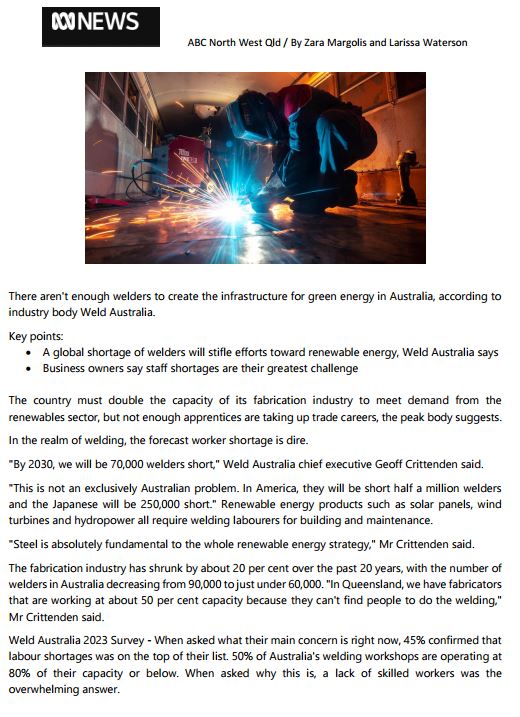The Welding skill shortage in the UK – inspiring the next generation
In the intricate tapestry of the UK’s workforce, a noticeable gap is emerging—one that poses a significant challenge for the future of manufacturing. The shortage of skilled welders has become a pressing concern, casting a shadow on the robust machinery and manufacturing sectors that rely heavily on this specialised skill set.
Welding, often overlooked but indispensable, forms the backbone of various industries. As the demand for precision engineering and metal fabrication rises, so does the need for adept welders. Unfortunately, the UK is experiencing a shortage that threatens to impede progress in the manufacturing realm.
Covid and Brexit have exacerbated a national skills shortage in the construction industry. The most recent Construction Skills Network (CSN) report forecasts that the construction industry may need an additional 225,000 workers by 2027. With many existing welders expected to retire by 2027, attracting new welding talent will be a critical part of the mix and central to filling the 36,000 new jobs that are expected.
In fact, the ageing workforce is a significant factor contributing to this shortfall. Skilled welders, often veterans in their field, are retiring without a sufficient influx of new talent to fill their shoes. The nature of welding demands a blend of theoretical knowledge and hands-on experience, making it a craft that requires time to master. The shortage is exacerbated by a lack of comprehensive training programs and educational pathways that can channel aspiring individuals into the welding profession.
This scarcity has tangible consequences for the manufacturing landscape. Projects face delays, and businesses grapple with increased labour costs as they compete for the limited pool of skilled welders. Moreover, the lack of welding expertise can compromise the quality of finished products, affecting the overall competitiveness of UK manufacturing on the global stage.
 Weld Australia has released the results of its 2023 Member Survey, which reveals the Federal Government must step in and provide real support to industry to make the renewable energy revolution a reality.
Weld Australia has released the results of its 2023 Member Survey, which reveals the Federal Government must step in and provide real support to industry to make the renewable energy revolution a reality.